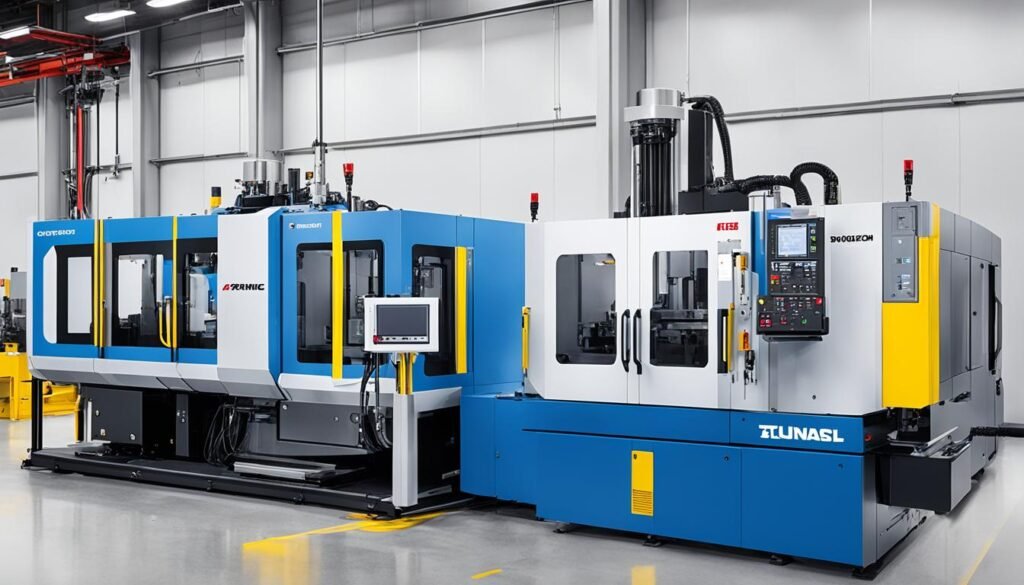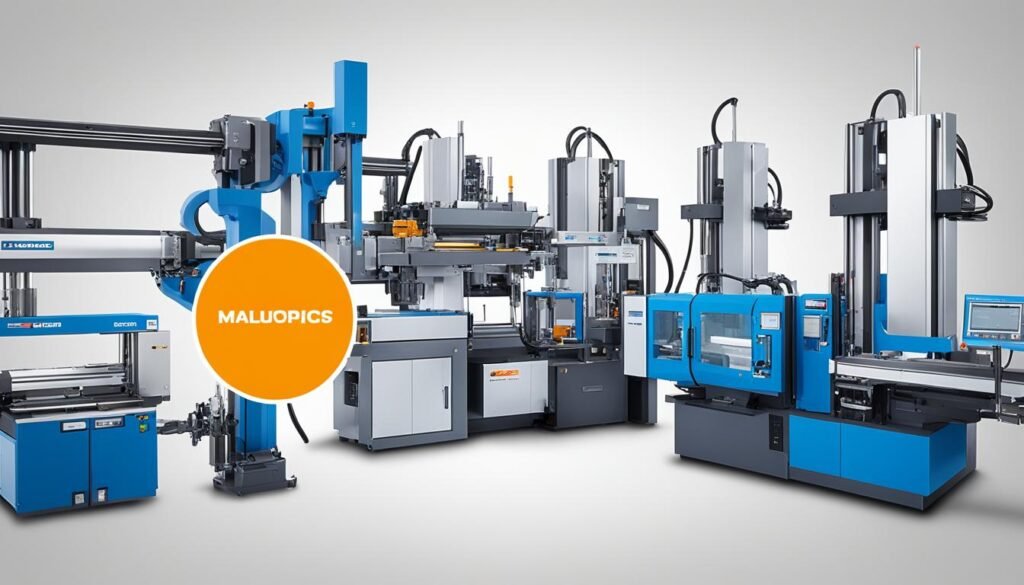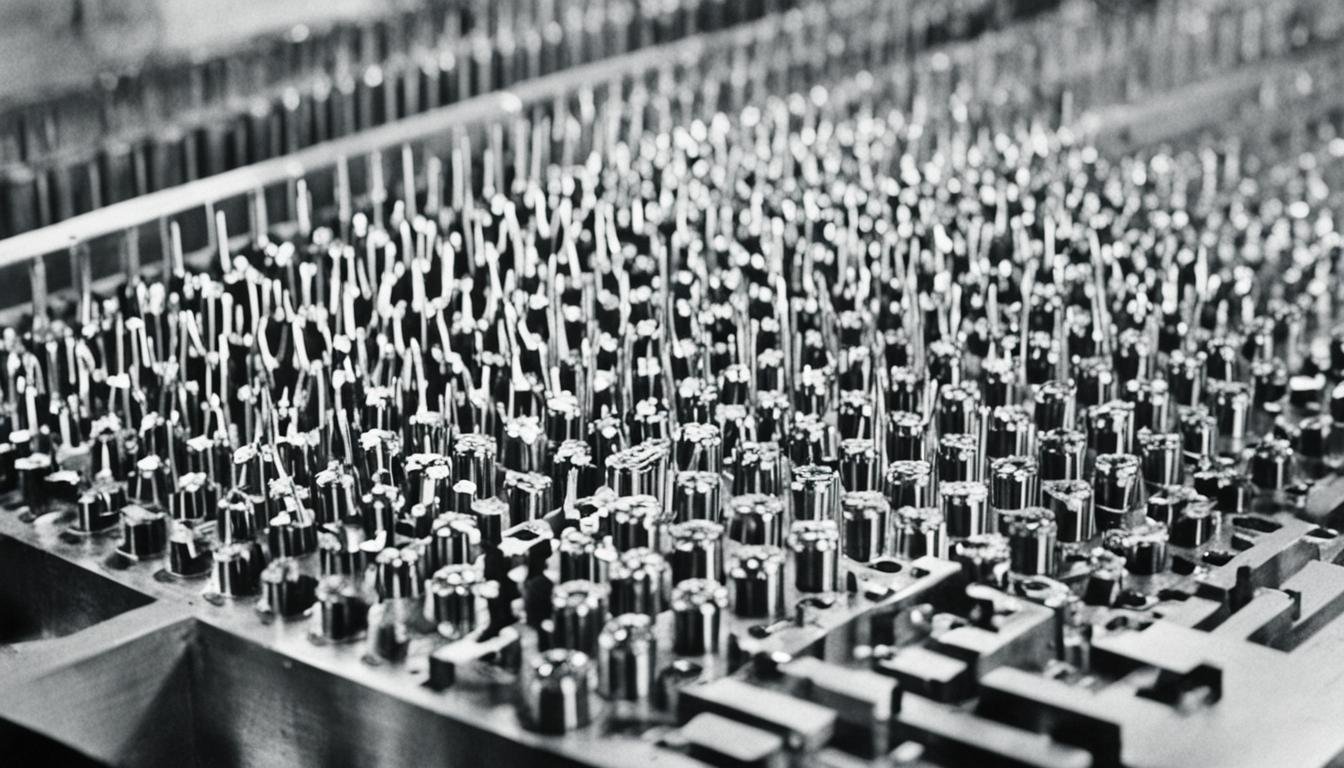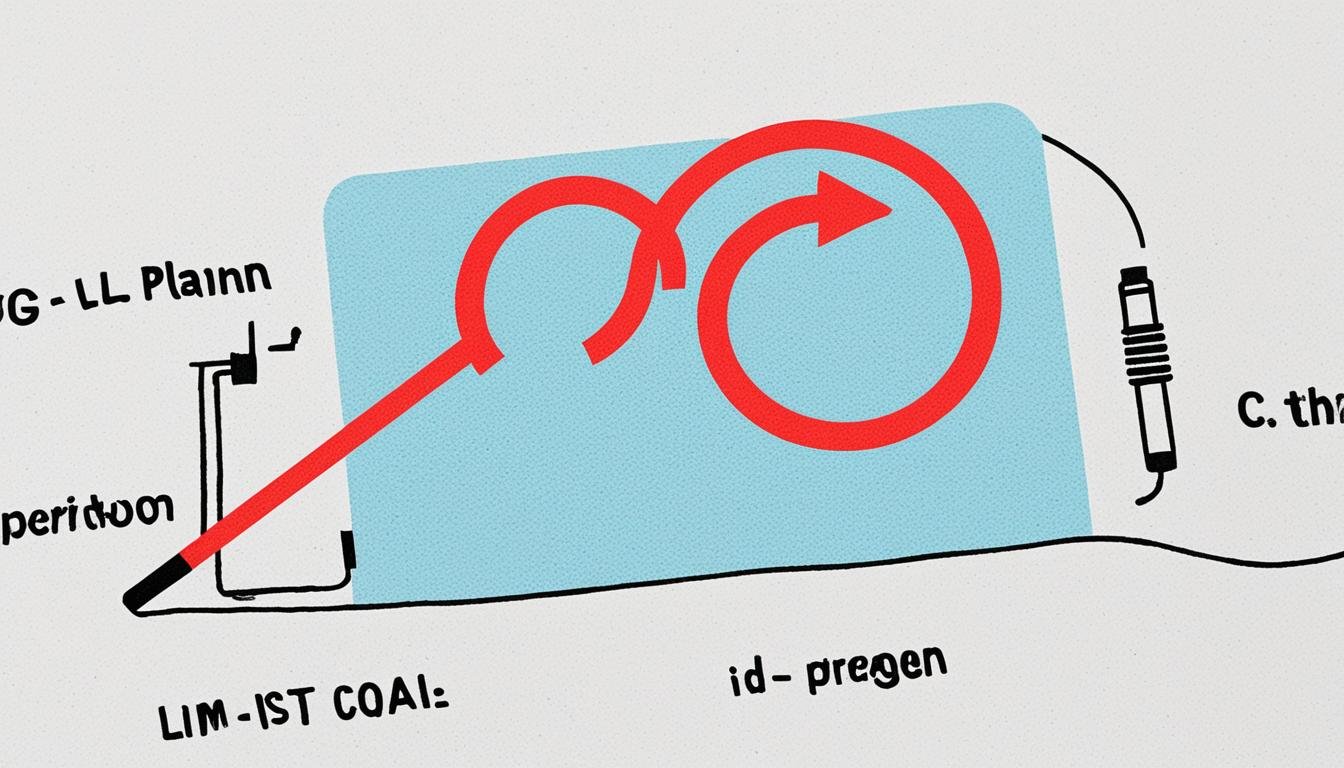Ever wondered how we make so many plastic products every day? It’s all thanks to the amazing growth of the THY Precision Injection Moulding Process Step by Step. This process has changed how we make plastics. From the early days of the Hyatt brothers to today’s advanced technologies, it’s a story of progress.
THY Precision is a top name in Injection Moulding Process Step by Step solutions. They invite you to see how this technology has evolved. Let’s look at the past, present, and future of Injection Moulding Process Step by Step. We’ll see how it has changed the way we make many products.
Key Takeaways
- The Injection Moulding Process Step by Step has changed a lot since the late 1800s. This is thanks to new technologies and changing needs in the industry.
- Today’s Injection Moulding Process Step by Step machines use computer help to make complex molds. This lets us make precise and detailed plastic parts.
- In 1946, James Watson Hendry introduced the screw injection machine. This changed the Injection Moulding Process Step by Step by improving how fast and well we can inject materials.
- THY Precision leads in the Injection Moulding Process Step by Step field. They offer new solutions and technologies for manufacturers.
- The future of the Injection Moulding Process Step by Step looks promising. We’ll see new materials, automation, and sustainable ways to make plastic products.
What is Injection Moulding Process Step by Step?
At THY Precision, we know the Injection Moulding Process Step by Step is key in making plastics. This process melts plastic bits and puts them into a mold. Then, it cools and hardens to make the shape we want. Plastic injection molding makes many kinds of plastic items, from simple things at home to complex parts for industry.
The Basic Principles
The basics of Injection Moulding Process Step by Step are simple yet smart. It starts with mold design, making sure the mold fits the product’s shape. Then, the melt delivery system heats the plastic bits until they turn into liquid. This liquid is then injected into the mold.
The clamping unit keeps the mold steady during the injection. After the plastic cools and sets, the product is ready.
| Key Components | Description |
|---|---|
| Injection Unit | Responsible for melting and injecting the plastic granules into the mold. |
| Clamping Unit | Holds the mold in place and ensures a secure and consistent injection cycle. |
| Mold Design | Carefully crafted to accommodate the desired shape and features of the final product. |
| Melt Delivery System | Heats and melts the plastic granules, transforming them into a liquid state for injection. |
“The Injection Moulding Process Step by Step shows how modern manufacturing is clever and efficient. By using melted plastic, we make many products that are part of our daily lives.”
A Brief History of Injection Moulding Process Step by Step
The story of Injection Moulding Process Step by Step, or plastic injection molding, started in the late 1800s. It has grown a lot over time. Important events have shaped the industry into what it is today.
Key Milestones
In 1872, the Hyatt brothers, Isaiah and John, created the first molding machine. It was used for making buttons, hair combs, and other small items. This was the start of the Injection Moulding Process Step by Step journey.
Later, in the early 1900s, German scientists Arthur Eichengrün and Theodore Becke made big steps forward. They developed safer materials by creating soluble forms of cellulose acetate. Eichengrün then patented the injection molding of plasticized cellulose acetate in 1939.
The 1930s and 1940s brought the invention of well-known plastics like polyvinyl chloride, polystyrene, and polyolefins. These materials opened up more possibilities for Injection Moulding Process Step by Step.
In 1946, James Watson Hendry made a huge leap with the screw injection machine. This machine gave better control over the injection process. It changed plastic injection molding for the better.

The growth of Injection Moulding Process Step by Step shows the creativity and progress in the industry. From the Hyatt brothers’ early work to major advances in materials and machines, this process is now key in many industries today.
Modern Injection Moulding Process Step by Step Technologies
The world of Injection Moulding Process Step by Step has changed a lot, thanks to new technologies. Now, plastic injection molding is more efficient and precise. This is due to computer-assisted manufacturing and automation.
Computer-Aided Design (CAD) and Computer-Aided Manufacturing (CAM) tools have changed mold design and production. Engineers can now make complex mold designs easily. This has opened up new possibilities for product innovation.
Computer Numerical Control (CNC) machines have made the Injection Moulding Process Step by Step better. These machines, with lots of automation and computerization, make molding more precise and consistent. This means better quality and less waste.
Robotic unloaders and automated systems have also made a big difference. They automate tasks, making production faster and maintaining high quality. This meets the demands of modern consumers.
Advanced hybrid molding machines have brought more versatility and energy efficiency to Injection Moulding Process Step by Step. These machines use electric and hydraulic systems together. This reduces energy costs and makes manufacturing more sustainable.
The Injection Moulding Process Step by Step industry is always changing. Using these modern technologies is key for manufacturers to stay ahead. By adopting these innovations, businesses can improve productivity, quality, and efficiency. This helps them succeed in the competitive plastic production market.
The Variety of Injection Moulding Process Step by Step Machines
The world of plastic injectionmouldingprocessstepbystep is vast and diverse. It has a wide range of machine types for different production needs. From classic hydraulic machines to electric and hybrid models, each has unique features. These features can greatly affect the quality and efficiency of your plastic injectionmouldingprocessstepbystep operations.
Choosing the Right Injection Moulding Process Step by Step Machine
When picking the right injectionmouldingprocessstepbystep machine for your business, consider several key factors. The type of plastic material, the complexity of the part design, production speed, and precision requirements are all important. They help determine the best machine for your needs.
Some common Injection Moulding Process Step by Step machine types include:
- Hydraulic injection molding machines: These machines are powerful and versatile. They are a popular choice for many plastic injectionmouldingprocessstepbystep applications.
- Electric injection molding machines: These machines are energy-efficient. They offer precise control and are ideal for high-precision parts.
- Hybrid injection molding machines: Hybrid machines combine hydraulic and electric systems. They provide enhanced performance and energy savings.
- Vertical injection molding machines: These machines are designed for specific part geometries. They are great for producing thin-walled or long, slender components.
- Two-shot (multi-shot) injection molding machines: These machines allow for the injection of different plastic materials. They are used to create complex, multi-material parts.
- Rotary injection molding machines: With a rotating mold table, these machines are excellent for producing parts with multiple cavities. They improve productivity and efficiency.
- Micro injection molding machines: These machines are tailored for making miniature or micro-sized components. They offer precise control and high-quality results.
- LSR (Liquid Silicone Rubber) injection molding machines: These machines are designed for liquid silicone rubber. They are essential for producing flexible, durable parts.
- PET preform injection molding machines: These machines are crucial for making PET preforms. They are used in the production of plastic bottles and containers.
- PVC injection molding machines: These machines are optimized for processing polyvinyl chloride (PVC). They are important for producing a wide range of PVC products.
Understanding the unique capabilities and applications of each Injection Moulding Process Step by Step machine helps you make an informed decision. This way, you can select the perfect solution for your production needs.
| Machine Type | Key Features | Ideal Applications |
|---|---|---|
| Hydraulic Injection Molding | High power, versatile, and reliable | Wide range of plastic parts |
| Electric Injection Molding | Energy-efficient, precise control, high repeatability | High-precision parts |
| Hybrid Injection Molding | Combines hydraulic power and electric precision | Diverse applications, improved performance and efficiency |
| Vertical Injection Molding | Designed for thin-walled or long, slender parts | Specific part geometries |
| Two-Shot Injection Molding | Enables sequential injection of different materials | Complex, multi-material parts |

Selecting the right Injection Moulding Process Step by Step machine is key to the success of your plastic production. By evaluating your specific requirements and matching them with the capabilities of different machines, you can optimize your processes. This leads to better product quality and increased efficiency.
The Future of Injection Moulding Process Step by Step
The world of injectionmouldingprocessstepbystep is changing fast, thanks to new ideas and a focus on being green. As more people want plastic products, the industry is changing to be better and greener.
Automation and computer systems are becoming more common. This means better robots and smart tech will make making plastic products faster and more precise. It will also make sure products are made better and with fewer mistakes.
There’s also a big push for being eco-friendly. People are worried about the harm plastics do to the planet. So, companies are looking into using bioplastics, which come from things that grow back. They’re also looking into recycling to cut down on waste and help the planet.
The future of injectionmouldingprocessstepbystep will be about making more plastic products and being kind to the earth. By using new tech, making bioplastics, and recycling more, the industry aims to lead in making things responsibly.
| Future Trend | Description |
|---|---|
| Automation | Advanced robotics and computer systems are being added to make making plastic products better, faster, and more precise. |
| Sustainability | Using bioplastics and recycling more to lessen the harm plastics do to the planet and support a recycling economy. |
| Bioplastics | New, green materials are being made to replace traditional plastics, which come from oil. |
| Recycling | Strong recycling efforts are being made to reduce waste and help the injectionmouldingprocessstepbystep industry be more eco-friendly. |
As injectionmouldingprocessstepbystep changes, companies need to keep up with new tech and green ideas. This will help them stay ahead and make a better future for everyone.
“The future of the Injection Moulding Process Step by Step industry lies in its ability to balance innovation and sustainability, paving the way for a more efficient and eco-friendly manufacturing landscape.”
Conclusion
The journey of the Injection Moulding Process Step by Step has been amazing. It started in the late 19th century and has grown a lot since then. Today, we have advanced machines and processes that meet our needs.
Looking ahead, the industry must balance tech progress with caring for the planet. There’s a big push for plastics that are efficient, affordable, and good for the earth. This will lead to new solutions that are better for our planet.
THY Precision is a key player in this change. They focus on innovation and understand what the market needs. THY Precision keeps delivering top-notch solutions for their clients. As things change, they’re ready to lead, making sure plastic production stays important in our world.





